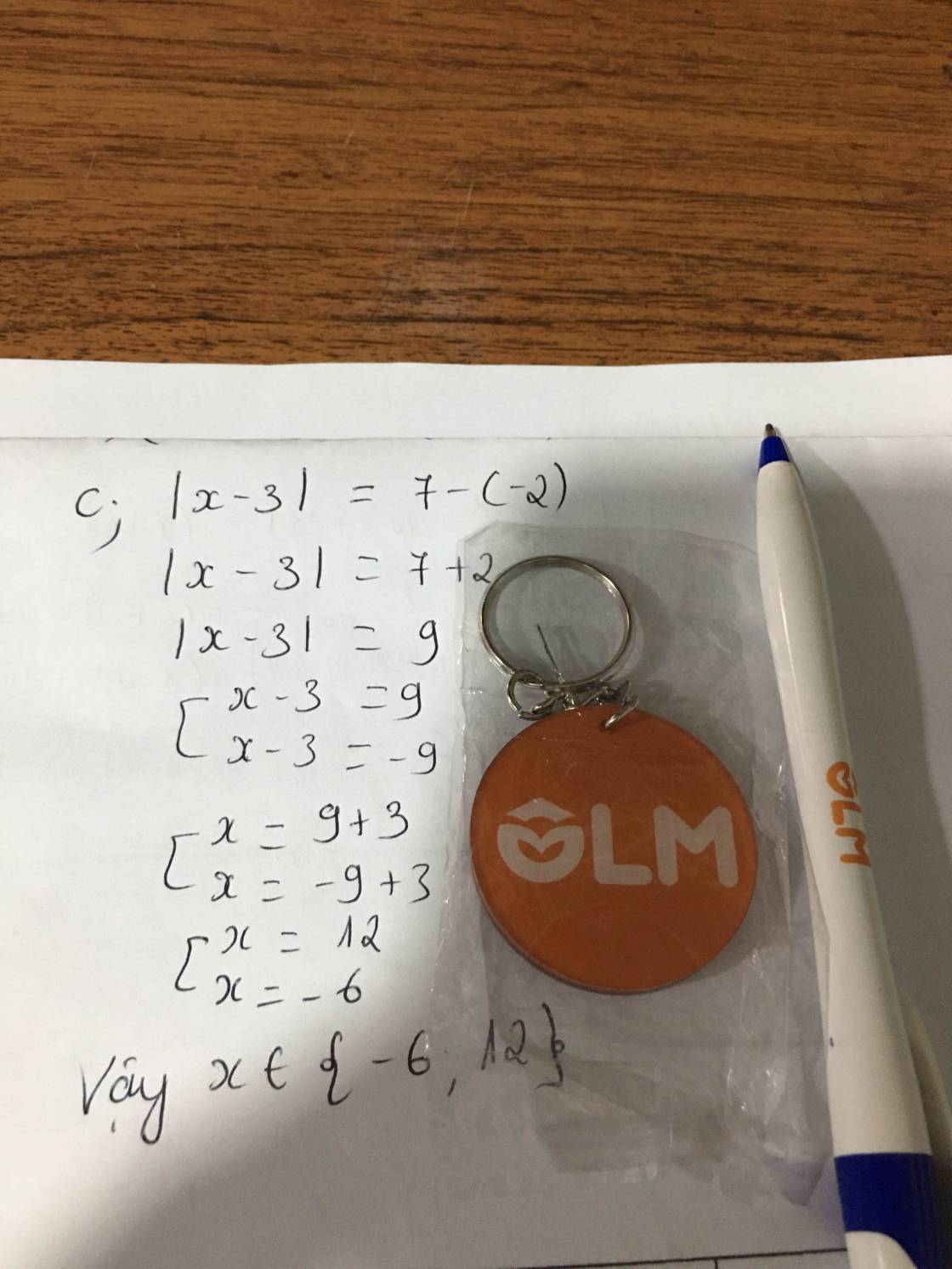
Hãy nhập câu hỏi của bạn vào đây, nếu là tài khoản VIP, bạn sẽ được ưu tiên trả lời.


22x-1 + 6 . 28 = 14.28
=> 22x-1 + 6 . 28 = 7.2.28
=> 22x-1 + 6 . 28 = 7 . 29
=> 22x-1 + 6 = 7 . 29 : 28
=> 22x-1 + 6 = 7 . 2
=> 22x-1 + 6 = 14
=> 22x-1 = 8
=> 22x-1 = 23
=> 2x - 1 = 3
=> 2x = 4
=> x = 2

a. 100 - 7 ( x - 5 ) = 58
<=> 7 ( x - 5 ) = 100 - 58
<=> 7 ( x - 5 ) = 42
<=> x - 5 = 42 : 7
<=> x - 5 = 6
<=> x = 6 + 5
<=> x = 11
Tương tự tiếp.
a;100-7(x-5)=58
=>7(x-5)=100-58=42
=>x-5=42:7=6
=>x=6+5=11
b;12(x-1):3=72
=>12(x-1)=72.3=216
=>x-1=216:12=18
=>x=18+1=19
c;12-4(x-1)=4
=>4(x-1)=12-4=8
=>x-1=8:4=2
=>x=2+1=3
d;32-12x=8
=>12x=32-8=24
=>x=24:12=2
nho h do nhe viet moi tay lam day biet ko

12 - x + 2 - 3 = 10
12 - x + 2 = 10 + 3
12 - x + 2 = 7
12 - x = 7 - 2
12 - x = 5
x = 12 - 5
x = 7

a. 3x ( x + 1 ) - 6 ( x + 1 ) = 0
Có x+1 = x+1
=> 3x = 6
=> x = 2

Đề: Có ở trên
a) Khi nào nó là 1 phân số?
b) Khi nào nó là một số nguyên?

1.4 là tứ
3 là tam
tứ chia tam là tám chia tư
8:4=2
Vậy 4:3=2
2. Có 1 chữ C
3. Tay phải

\(a,\dfrac{x}{3}=-\dfrac{1}{2}\)
\(\Leftrightarrow2x=-1.3\)
\(\Leftrightarrow2x=-3\)
\(\Leftrightarrow x=-\dfrac{3}{2}\)
\(b,\dfrac{x}{3}=\dfrac{3}{x}\)
\(\Leftrightarrow x.x=3.3\)
\(\Leftrightarrow x^2=9\)
\(\Leftrightarrow x=\pm3\)
a)\(\dfrac{x}{3}=-\dfrac{1}{2}\)
\(\Rightarrow2x=-3\)
\(\Rightarrow x=-\dfrac{3}{2}\)
b)\(\dfrac{x}{3}=\dfrac{3}{x}\)
\(\Rightarrow x^2=9\)
\(\Rightarrow\left[{}\begin{matrix}x=3\\x=-3\end{matrix}\right.\)